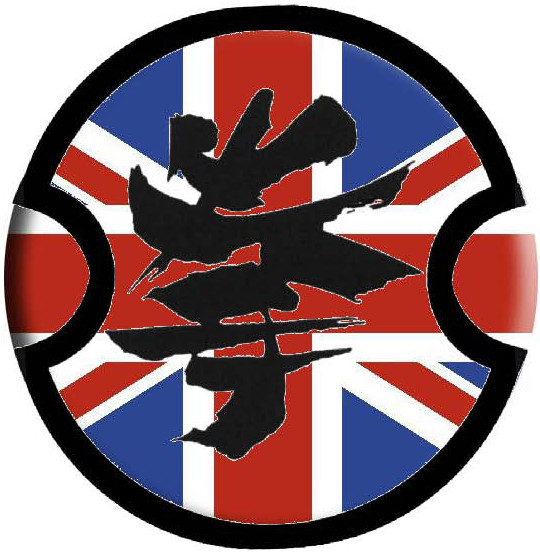
KENPO KAI HONBU
united kingdom
«From the United Kingdom Kenpo Kai Honbu, we welcome you to our website, I hope that the information on this site helps you get to know us a little more and I hope that one day you will be part of the Kenpo Kai family.»
PRESENTATION
Kenpo Kai may also be found written in romaji in the following ways: Kenpō Kai, kenpokai, kempokai, kenpo-kai y kempo-kai and in Kanji as (拳法會) or (拳法会).
Kenpo Kai means «meeting of the methods of the fist» (拳 ken = fist, 法 pō = method or system, 會 or 会 kai = meeting) and it is a traditional Japanese budō martial art, with some Chinese influence.
Its philosophy and goal is the personal development and the search for balance through the practice and training of Kenpo Kai. It develops physical and mental strength and resilience of spirit or self-improvement, maintaining the values of the Samurai Code, such as humility, respect, etc, which are intrinsic in traditional Japanese martial arts. It stands out for its effectiveness in combat and its work mainly focused on applied self-defense.
Kenpo Kai is based on three main blocks:
Reiho (礼法)
Reiho (etiquette) calms the mind and develops self-control. It makes us better individuals and trains our intellect to react quickly in dangerous situations. Its practice maintains the traditions and preserves the wisdom of those who preceded the current Kenshis (Kenpo Kai practitioners).
And old proverb in Kenpo Kai says: “Without a strong spirit and a wise mind there will never be triumph”
Uchiho (内法)
The System of balancing the body (Seitaiho 整体法) consists of the techniques of acupressure (Shiatsuho 指圧法), massage (Anmaho 按摩法), joint treatment (Seifukuho 整復法), study of vital points (Kyushoho 急所法). This section is also enriched by other techniques adapted to the practice of Kenpo Kai, such as breathing work (Kokyuho 呼吸法), meditation (Mokuso 黙想), internal energy (Kiho 気法) philosophy (Tetsugaku 哲学), etc. All these methods or systems compose the so-called internal system (Uchiho 内法) of Kenpo Kai.
Bujutsuho (武術法)
Bujutsuho (martial technical system) is the learning of fighting techniques. It is composed of: Forms (Kata 型), Self Defense (Goshinjutsu 護身術), Combat (Randori 乱取), Traditional Weapons (Buki 武器), Vital Points (Kyusho 急所), Breaking Test (Tameshiwari 試割り), Cutting Test (Tameshigiri 試し切り). This learning includes strikes, dislocations, immobilizations… both standing and on the ground with weapons or without them, against one or several opponents. This system or method is considered the external system (Sotoho 外法) of Kenpo Kai.
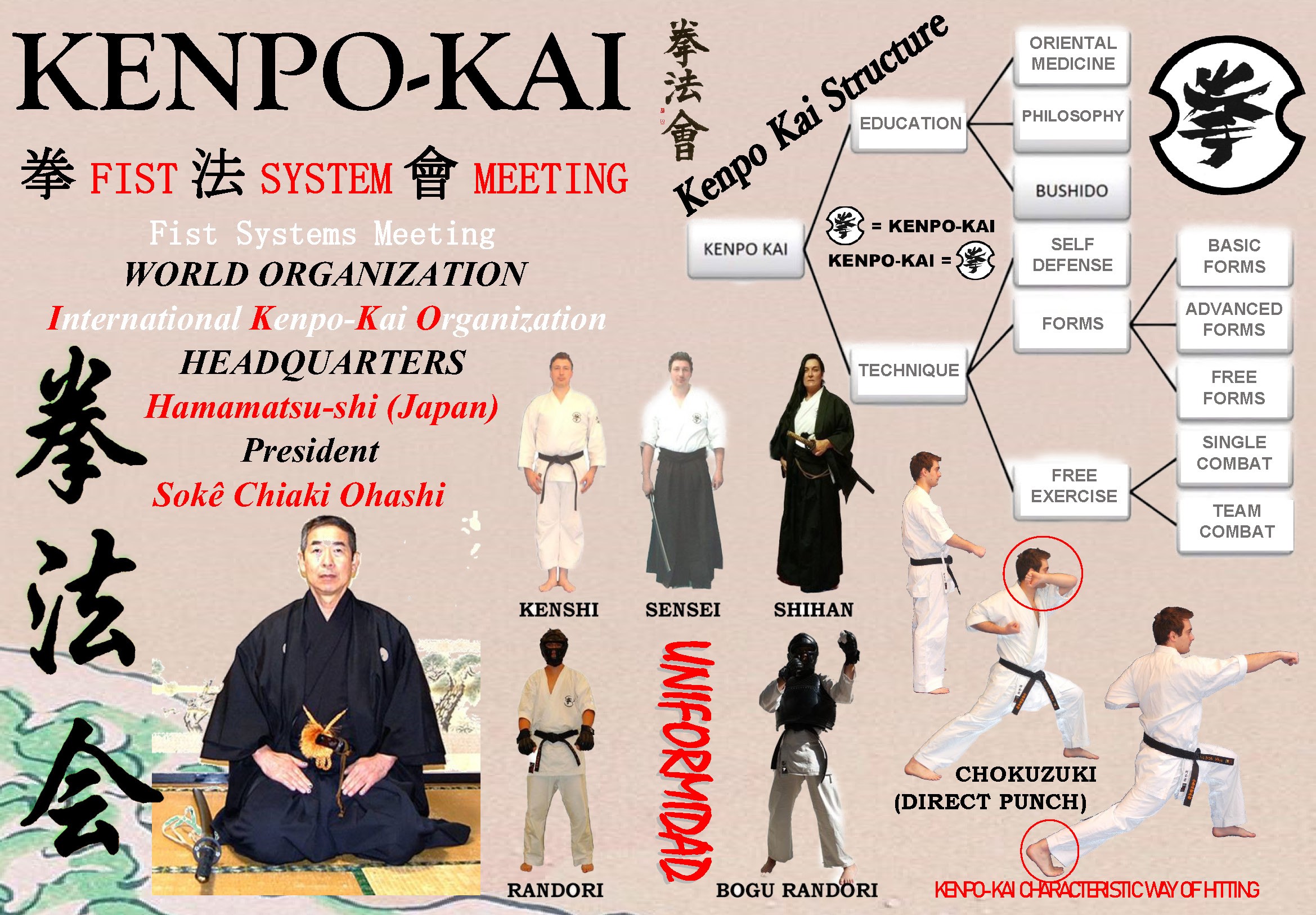
HISTORY
A Shaolin monk named Jiang teaches his family the Shaolin Quan fighting system so they can defend themselves against repeated attacks by thieves. This martial art has been passed down through generations within the Jiang family, becoming known as Jiang Quan, or Jiang family boxing.
During the Tokugawa Shogunate, a young Japanese adventurer named Tawada Ishizaka, skilled in the art of kashima shinto ryū, travels to China. During his journey in this country, he spends several years in the service of the Jiang family. Upon marrying one of the Master’s daughters, he is accepted as a student and initiated into their martial art
Returning to Japan with his children, Tawada decides to create a theatrical troupe for survival, showcasing performances based on his mastery of jiang chuan, known as Shouken in Japanese. In his advanced years, Tawada entrusts the most spectacular elements of his shows to his son. Over time, he formalizes and evolves the practice of his martial art, integrating aspects of the kashima shinto ryū he practiced in his youth, thereby imparting a distinct personality to the style. He passes this legacy on to his descendants, giving rise to the martial art known as ishizaka ha kenpō.
The last Masters of ishizaka ha kenpō were Koiso Ishizaka (1915-1966), his brother Kazuo (1921-1998), and Koiso’s son, Sotoki Ishizaka (1943-1987).
In the early 1960s, Kazuo Ishizaka contacts a descendant of the Jiang family in China, Master Rou Jiang (1889-1978). He becomes his student and undergoes training for several years under his guidance, rediscovering the lost techniques of Shouken.
In the late 1960s, Kazuo Ishizaka completes the codification of Kenpo Kai after an exhaustive study of the fighting systems that gave birth to his family’s art. His intention is to recover and integrate the lost techniques of Shouken with ishizaka ha kenpō and kashima shinto ryū. One of his major supporters in achieving this goal is Grand Master Chiaki Ohashi.
It is at this moment that Kenpo Kai is born, as it is known today.
Kenpo Kai has its philosophical principles rooted in the samurai spirit of bushidō.
In 1969, Kenpo Kai officially begins to be taught to anyone interested in learning, regardless of whether they are from the East or the West. This is a departure from ishizaka ha kenpō, which was exclusively taught to members of the Ishizaka family or within very restricted circles.
In 1980, the International Kenpo Kai Organization (I.K.K.O.) is established with its headquarters in Tokyo, Japan.
In 1985, the European Kenpo Kai Organization (E.K.K.O.) is officially registered as the European delegation of IKKO.
In 1987, Master Sotoki Ishizaka tragically passes away in a car accident in Brazil.
In 1990, the first Kenpo Kai World Championship is held in Tokyo, Japan. Spanish martial artist Juan María Vidal became the world champion, winning the final against the American competitor Mike Robertson.
In 1998, Master Kazuo Ishizaka passes away, leading to some uncertainty about the future of Kenpo Kai. Grand Master Chiaki Ohashi assumes leadership of Kenpo Kai, becoming the worldwide president in the year 2000. His major achievement has been the reorganization and global unification of this martial art, aiming for greater dissemination and international recognition for Kenpo Kai.
In 2000, the central headquarters of Kenpo Kai officially moves to the Japanese city of Hamamatsu.
Since then, Kenpo Kai practice has experienced a significant expansion and their practitioners (kenshis) can be found worldwide. Additionally, Kenpo Kai is recognized and is part of Kenpo schools in some national federations in various countries.
In October 2023, in Tunisia, the recognition ceremony for Sōke (Guardian of the school) Chiaki Ohashi took place, awarding him the 10th Dan black belt in Kenpo Kai. He is now the sole living individual worldwide to hold this prestigious rank.
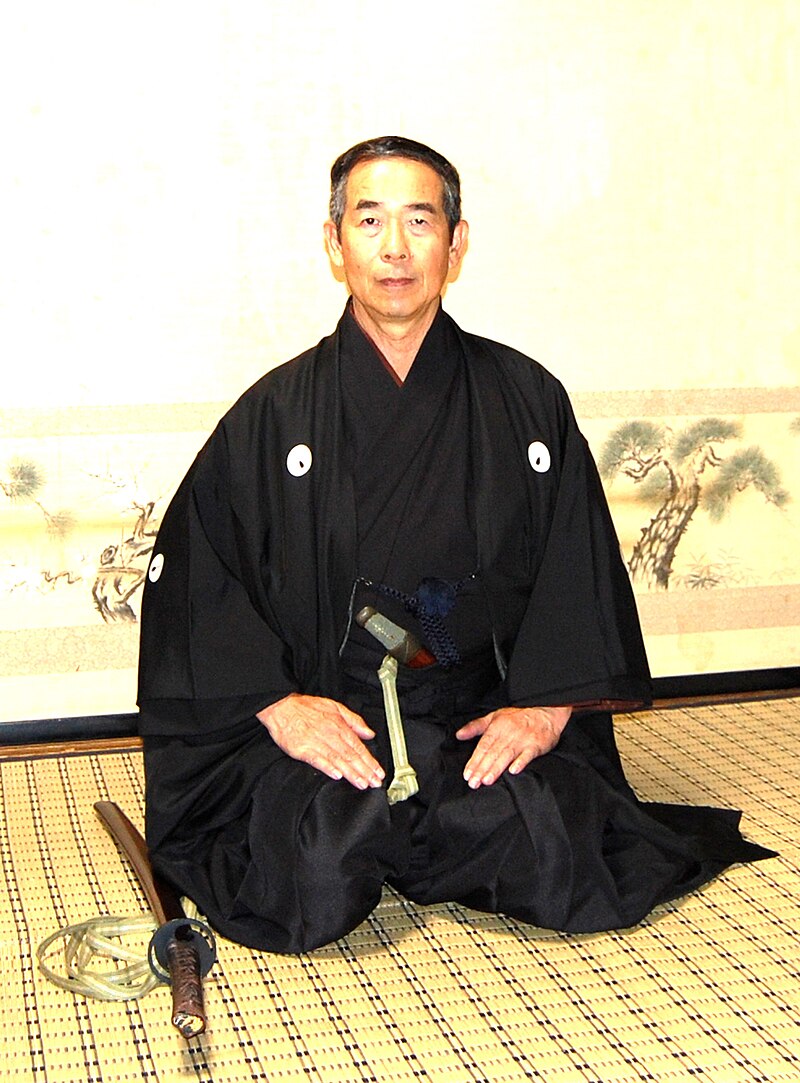
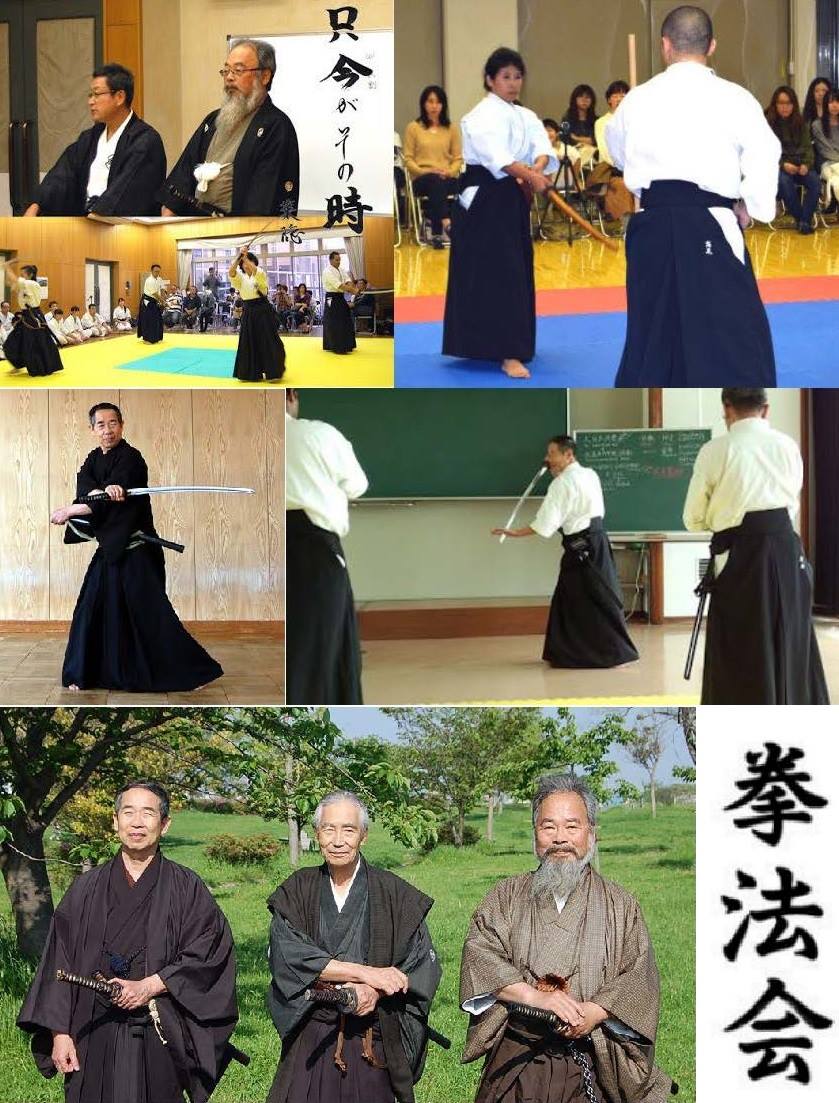
LEARNING STRUCTURE
The current structure preserves the traditional stages of teaching. For this, Kenpo Kai has a highly organized program based on levels of colored belts called Kyū (級) and black belt ranks called Dan (段).
Each Kyū level has a specific belt color. From higher to lower, the Kyū levels in Kenpo Kai are:
- Rokkyū (六級) 6thKyu (white belt)
- Gokyū (五級) 5thKyu (yellow belt)
- Yonkyū (四級) 4thKyu (orange belt)
- Sankyū (三級) 3rdKyu (green belt)
- Nikyū (二級) 2ndKyu (blue belt)
- Ikkyū (一級) 1stKyu (brown belt)
Dan ranks in Kenpo Kai always have a black belt. From lower to higher:
- Shodan (初段) 1stDan
- Nidan (弐段) 2ndDan
- Sandan (参段) 3erDan, Master (Sensei 先生)
- Yondan (四段) 4thDan
Godan (五段) 5th Dan, Master of Masters (Shihan 師範)
Rokudan (六段) 6thDan
Shichidan (七段) 7thDan
Hachidan (八段) 8thDan
Kudan (九段) 9thDan
Judan (十段) 10th Dan, Guardian of the School (Sôke 宗家)
THE STRUCTURE OF THE LEARNING IS BASED ON 5 PRINCIPLES:
- Kihon (基本) Base
- Kata (型) Form
- Waza (技) Technique
- Randori (乱取) Free-style practice
- Tameshi (試し) Test

WAZA TECHNIQUES 技
Kenpo Kai involves the study of three major blocks: the mental through Reiho, physical well-being through Seitaiho, and the martial through Bujutsuho.
These major blocks complement each other to make the Kenshi (拳士) a stable and effective individual when the situation demands it.
Various techniques are trained and studied for this purpose, such as:
Bujutsuho.
It is another part encompassed by traditional Kenpo Kai within the external system (sotoho). Its characteristics include the development of body control, toughening, handling traditional weapons (bukiho), the study of combat strategies based on the 5 elements and animals (Godai 五大), and personal defense (Goshinjutsu). Within this last system, there are 3 subsystems, which are:
- GOHO (剛法)
Hard method. Goho corresponds to the learning of the hard system, which involves strikes, blocks, evasions…
- JUHO (柔法)
Soft method. Juho corresponds to the learning of the soft or gentle system. It is a method of combat involving grappling, throws, immobilizations, strangulations and joint dislocations.
- GOJUHO (剛柔法)
Hybrid method. Gojuho hybrid system is a combination of the two previous methods, combining them in the most effective way. It is the most comprehensive system of personal defense practiced in Kenpo Kai, making it an effective self-defense method.
- GOHO (剛法)
KIHO
In the advanced stage of Kenpo Kai, practicioners engage in energy work techniques (kiho), which involve a specific set of breathing exercises like kokyu go kata 呼吸剛型 (hard breath form). This entails an isotonic muscle exercise designed to enhance stability and concentrate strength in a particular area of the body. The objective is to exert maximum force in techniques, thereby making the body stronger and more resistant. This marks the initiation of techniques geared towards enhancing overall health.
BUKIHO
Weapons system. There are 12 weapons studied in Kenpo Kai, including traditional ones like Bō 棒 (staff), Nawa 縄 (rope), and the most important one, the Japanese sword (Nihonto 日本刀).
KATA
Forms or sequences. In Kenpo Kai, there are various Kata performed individually or with partners, involving weapons, and also competition katas. Black belts also have forms inspired by animals.
ADVANCED KENPO KAI
From black belt 1st Dan onwards, the learning of advanced Kenpo Kai begins. It is more demanding both technically and physically. This type of work is not possible without the acquisition and understanding of a strong foundation.
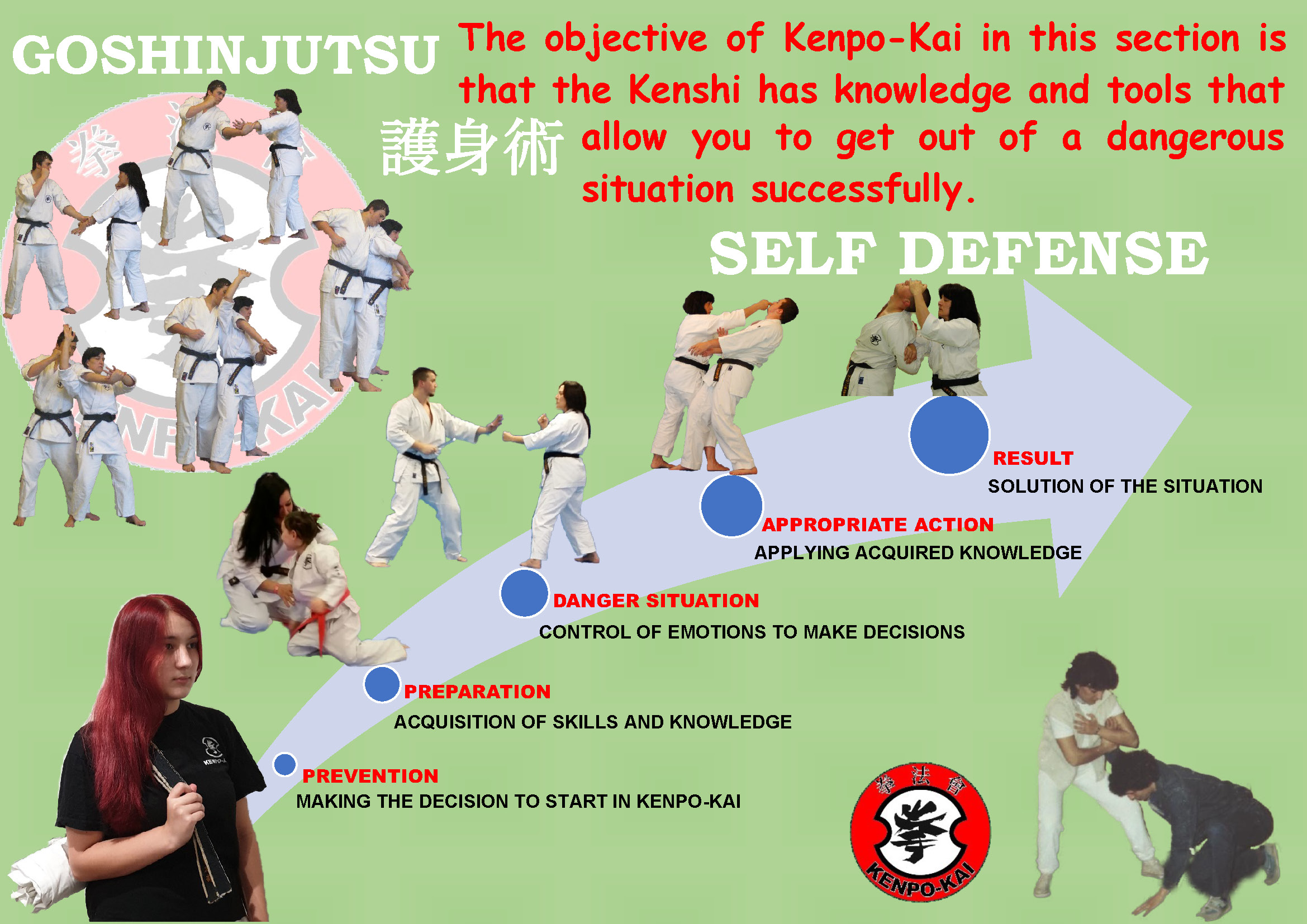
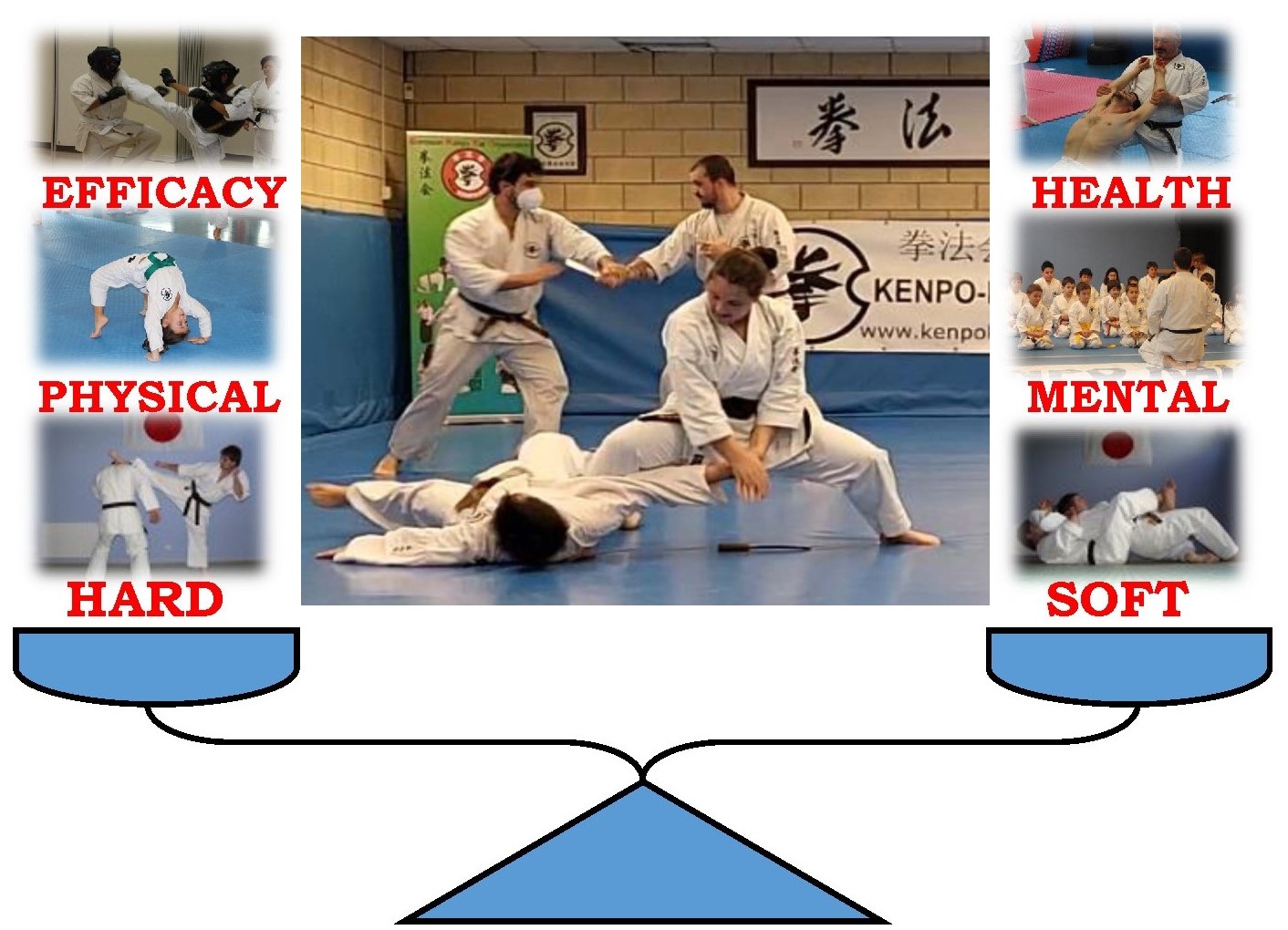
SHIAI COMPETITION 試合
In 1976, the first Kenpo Kai championship was held in the Japanese city of Wajima.
The sporting aspect of Kenpo Kai practice is a modern evolution that allows this martial art to adapt to contemporary society by integrating moral and educational values with ancient Japanese warrior traditions through competition regulations. Competition enables the kenshi (Kenpo Kai practitioner) to acquire qualities such as modesty, teaching that outstanding sports results are fleeting, and one must always continue to evolve and learn.
In October 2023, Kenpo Kai World Championship was held for the first time outside of Japan, specifically in Tunisia (Africa), marking a significant milestone in the history of this school.
COMPETITION CATEGORIES IN KENPO KAI:
- KATA: Individual Technical Competition: Presentation of an individual Kata form from the official learning program
- JUHO ENBU: Pair Technical Competition: Execution of a series of personal defense techniques against an opponent.
- KENPO KAI IAI: Individual Technical Competition with Nihonto: Presentation of an individual Nihonto Kata, involving Japanese sword techniques, from the official learning program.
- Combat (Randori) Competition: Protective gear is used to prevent potential injuries. Kenpo Kai competition allows body contact, with the exception of punches to the head.
There are three categories of combat (Randori) :
- DANTAI RANDORI: (Team Randori Combat): Semi-contact team combat with protections. Teams consist of 3 or 5 individuals.
- BOGU RANDORI: (Semi-Contact Combat with Gear): Geared towards those starting in competition or individuals who prefer bouts with high protection.
- RANDORI: (Contact Combat): Typically reserved for brown and black belts, with minimal protections (helmet, gloves and groin guard).
One striking feature in Kenpo Kai competitions is observing competitors performing the Reitoku 礼徳 (courtesy, acknowledgment) after the match. It involves the following:
The victorious kenshi addresses their opponent. Both kneel in Seiza 正坐 (kneeling position), remove their helmets, and place them to the side. They both perform a bow (Zarei 座礼), in which the winner acknowledges the bravery, courage and respect of their opponent. The defeated expresses gratitude for this display of respect.


ORGANIZATION
Kenpo Kai is globally managed by the International Kenpo Kai Organization (IKKO) headquartered in Hamamatsu, Japan. IKKO has a delegation in each continent. For instance, in Europe, there it is the European Kenpo Kai Organization (EKKO), which is based in Spain. Additionally, within each country, EKKO has an Association (registered in the National Registry of Associations of the respective country).
List of countries where Kenpō Kai is currently being practised:
Tunisia, Australia, Spain, France, India, Indonesia, Japan, Nepal, Italy, Germany, Poland, Romania, Peru, Mexico, Netherlands, New Zealand, Canada, Zambia, Algeria, Cuba, Dominican Republic, Madagascar, United Arab Emirates, Myanmar, Sweden, United States.
Global President: Chiaki Ohashi, 10th Dan, IKKO (International Kenpo Kai Organization)
President in Europe: Juan-Mari Vidal, 8th Dan, EKKO (European Kenpo Kai Organization) President.
Europe Headquarters: Europe Kenpo-Kai Honbu, Pso. Julio Caro Baroja 2,31780 Bera – Navarra- España.
President in Africa: Sensei Mourad Saâdallah, AKKO (Africa Kenpo Kai Organization) President.
Africa Headquarters: Tunisia.
President in Asia: Takao Asai, 8th Dan.
Asia Headquarters: Nagoya, Japan.
President for Oceania: Shihan Alastair McIntosh Black Belt 8th Dan
Headquarters: Ashburton (New Zealand)
President for Central America: Sensei Angel David Compti
Headquarters: Dominican Republic
President for South America: Sensei Miguel Pajuelo
Headquarters: Peru
President for North America: Sensei Danny Jude Bardisa
Headquarters: United States
President for South Asia: Shihan Naraj Bahadur Khadka
Headquarters: Nepal
INVITATION TO JOIN THE KENPO KAI FAMILY
Hello, Kenpo Kai has been in Europe for 50 years.
Every day, we strive to improve and continue developing. Our goal is to bring Kenpo Kai to every corner of Europe, and we want to use this platform to invite you to join the Kenpo Kai family.
We offer online training programs for you to learn Kenpo Kai where there are no teachers and subsequently develop Kenpo Kai in your region or country.
Come on and join the Kenpo Kai family!!
CONTACT EMAIL:
honbu@kenpokai.info
